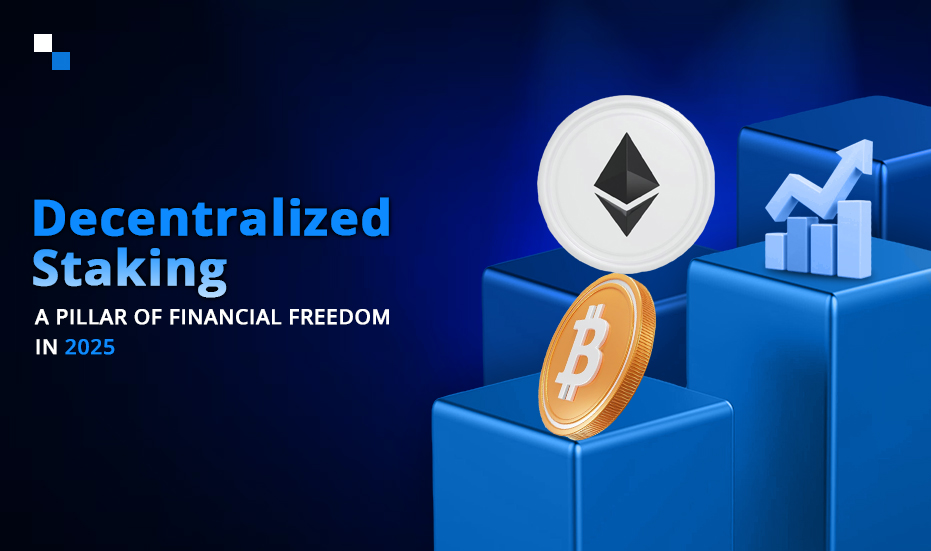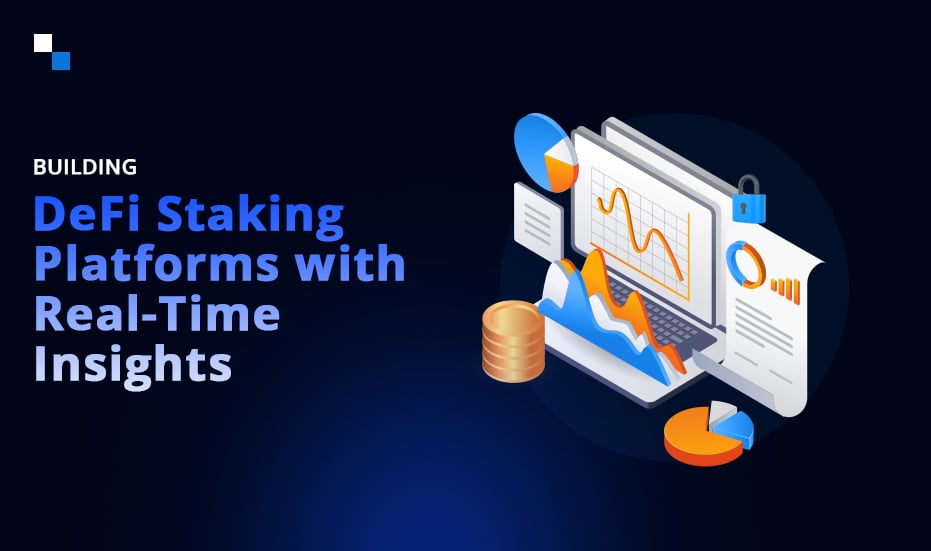
Everything about Developing your own Crypto Wallet in 2022
July 18, 2022
Is Perpetual Protocol A Thing for New-Gen DEX Trading Platform Development?
July 19, 2022Despite the broader crypto markets pulling back, the total value locked in DeFi and cumulative revenue has shown slow yet positive growth. This increasing activity and interest in DeFi yield farming and other DeFi trading strategies is a testament to crypto traders’ faith in decentralized finance.
Interestingly, yield farming in decentralized finance is not the only way by which crypto traders can multiply their gains. Lately, DeFi staking and liquidity mining have become equally popular. All three of them require traders to lock their assets in various ways in some or other kind of protocol. However, the underlying nature of how yields are generated is very different.
Let’s find out the difference between the three:
DeFi Yield Farming
Yield farming in decentralized finance allows the protocol participants to earn passive income when they deposit their assets into a liquidity pool. In 2020 DeFi summer, it was the most popular way to earn passive income on crypto assets. The liquidity pools on a DeFi protocol are equivalent to a bank account where crypto traders can pool their money. The protocol then uses this liquidity to offer loans to crypto borrowers. The interest earned by the protocol is then distributed among the liquidity providers (the participants who contributed to the liquidity).
The crypto assets contributed by the liquidity providers or LPs are locked into the smart contracts developed during DeFi yield farming development. While this helps DEXs or decentralized exchanges maintain liquidity, the liquidity providers or yield farmers earn certain APYs.
The yield farming protocols use AMMs or Automated Market Makers, which are smart contracts that act like order books in the case of Centralized exchanges. In the AMMs, liquidity providers, also known as farmers, lock their assets in liquidity pools.
Risks of Yield Farming
DeFi summer of 2020 proved yield farming is a high-risk but high-reward way of making passive income. Such yield farming strategies are exposed to risks like:
- Impermanent loss (IL)
- Smart contract exploitation risk
- Liquidation risk
DeFi Staking
DeFi staking refers to locking crypto assets as collateral in protocols built on Proof of stake blockchains. The traders who stake their assets are known as stakers and are chosen as validators to validate transactions on a proof-of-work blockchain. In return for the work that the stakers do to validate the transactions, they earn staking rewards that are calculated based on the number of coins they stake.
For every PoS chain, there is a minimum requirement of staked tokens to become a validator. Generally, this number is very high and that is why validators often get engaged with delegators who stake a small number of coins that add up to match the minimum staking requirement. The validator ensures the delegators receive the staking rewards every time a block is validated. The reward frequency varies from validator to validator.
Risks of staking
Staking is not as high-yield-generating passive income opportunity as DeFi yield farming but it has its own sets of risks:
- Validator risk – a validator must ensure a minimum uptime. If he fails to, he is susceptible to slashing wherein the protocol slashes his rewards. Therefore, the rewards distributed among the delegators also get slashed.
- Volatility risks – Cryptocurrencies are highly volatile. For every staking protocol, there is a minimum staking period. If the price of the asset crashes when the tokens are locked, the staker might suffer heavy losses.
- Waiting period reward distribution is purely controlled by validators
Liquidity Mining
Liquidity mining is a strategy to attract liquidity to a DeFi protocol. The crypto trader provides liquidity to a protocol in return for which he is awarded the token of the protocol. This token is called LP token or Liquidity Provider Token.
The token provider needs to provide token pairs like ETH/USDT in a certain ratio to the DeFi protocol and lock it for a minimum duration to earn LP tokens. Some of the liquidity mining protocols divide the reward payouts into original tokens and LP tokens.
The reward percentage is calculated based on the pool share.
Risks to Liquidity Mining
The only risks in liquidity mining are:
- Smart exploitation contract risk
- Project risk
- Rug pull risk
- Impermanent loss (IL)
Wrapping it up
From a broader perspective, liquidity mining is a type of DeFi yield farming. Thus, DeFi yield farming development for both yield farming and liquidity mining is quite similar.
If you are looking to explore the development of yield farming or any of the two DeFi strategies, connect with Antier Solutions. We provide end-to-end services to create secure DeFi protocols – be it for DeFi yield farming, DeFi staking, or liquidity mining.
Connect with our subject matter experts to share your business needs.



